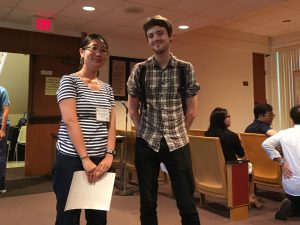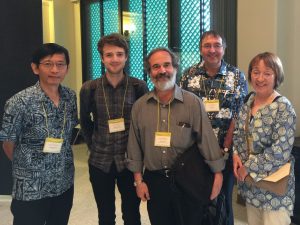LUNDEN, CAMPBELL, HUTCHENS, AND KALIVODA IN PHONOLOGY
Anya Lunden (UCSC PhD, 2006), Jessica Campbell, Mark Hutchens and Nick Kalivoda (UCSC) published a paper on “Vowel-length contrasts and phonetic cues to stress: an investigation of their relation” in Phonology this past December. The abstract is given below.
The functional load hypothesis of Berinstein (1979) put forward the idea that languages which use a suprasegmental property (duration, F0) contrastively will not use it to realise stress. The functional load hypothesis is often cited when stress correlates are discussed, both when it is observed that the language under discussion follows the hypothesis and when it fails to follow it. In the absence of a more wide-ranging assessment of how frequently languages do or do not conform to the functional load hypothesis, it is unknown whether it is an absolute, a strong tendency, a weak tendency or unsupported. The results from a database of reported stress correlates and use of contrastive duration for 140 languages are presented and discussed. No support for the functional load hypothesis is found.


